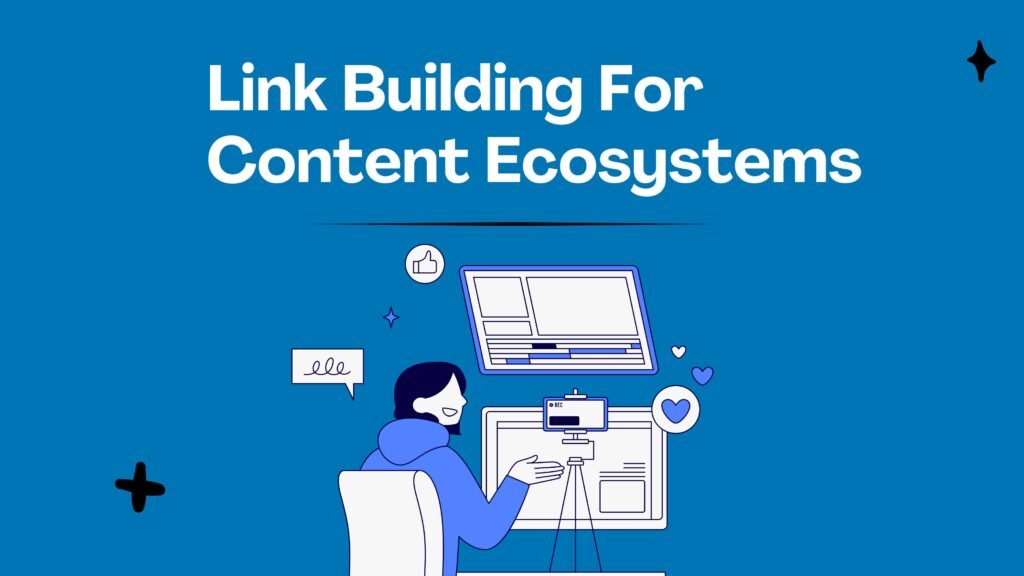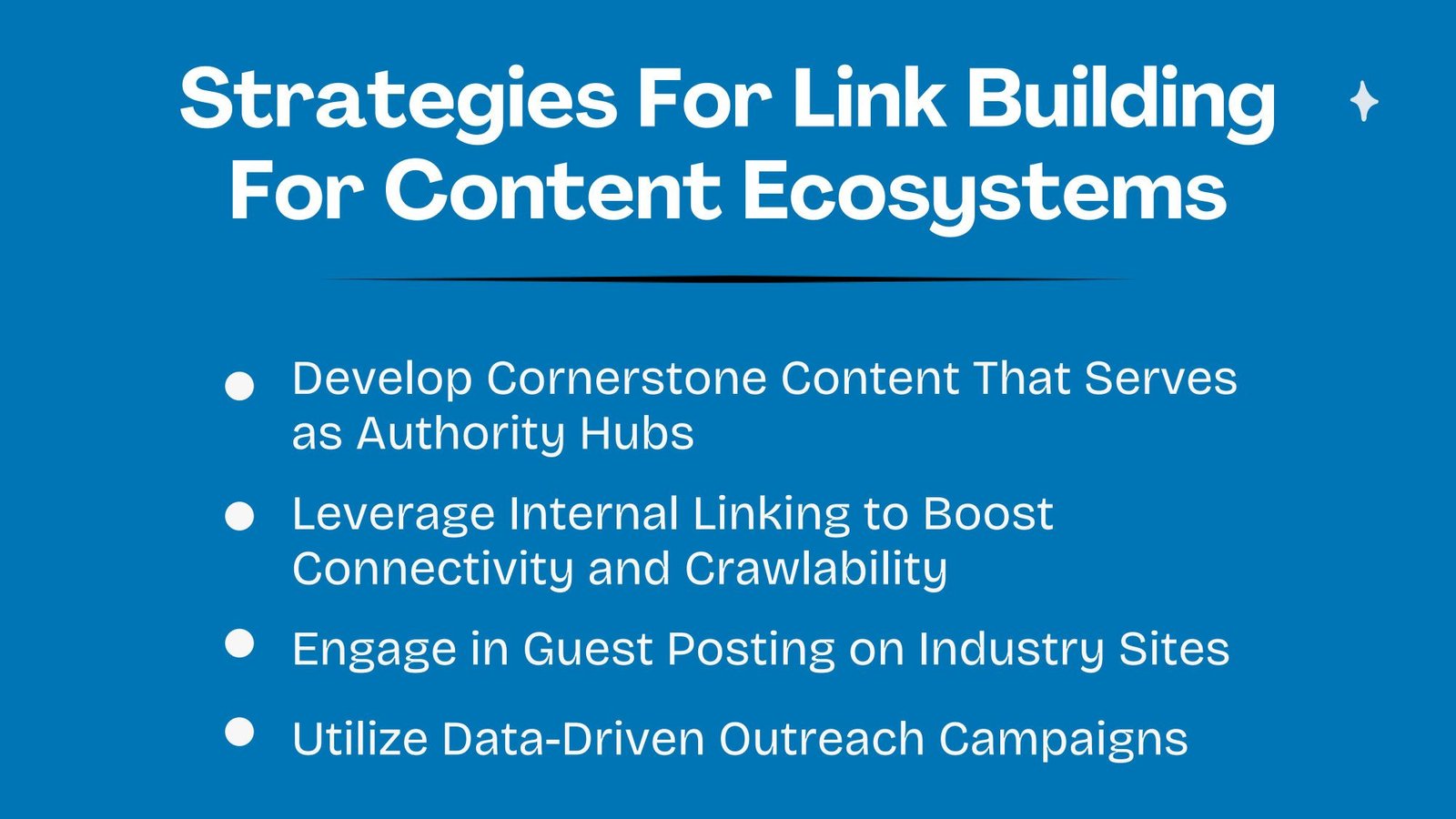
Link building is a cornerstone of effective digital marketing strategies, particularly within the expansive realm of content ecosystems. As businesses and brands strive to establish a robust online presence, understanding the intricacies of link building becomes paramount. This article delves into the essential role that link building plays in enhancing content ecosystems, offering insights into how it can drive traffic, improve search engine rankings, and foster a network of valuable connections.
In today’s digital landscape, content ecosystems are more than just a collection of blog posts and articles; they are dynamic networks of interrelated content pieces that work together to engage audiences and convey brand messages. Within these ecosystems, link building serves as a critical mechanism for creating pathways that connect various content elements, thereby enhancing the overall user experience and amplifying the reach of the content.
The importance of link building in content ecosystems cannot be overstated. It not only aids in improving the visibility of content across search engines but also establishes authority and credibility within a given niche. By securing high-quality backlinks from reputable sources, businesses can significantly boost their domain authority, which in turn, elevates their content’s position in search engine results pages (SERPs). This increased visibility leads to higher organic traffic, which is a key driver of sustained growth and engagement.
Moreover, link building fosters relationships with other content creators and industry leaders, creating opportunities for collaboration and cross-promotion. These relationships are invaluable, as they can lead to guest posting opportunities, co-authored content, and other forms of partnership that further enrich the content ecosystem.
As we explore the strategies and best practices for effective link building within content ecosystems, this article will provide actionable insights and practical tips for marketers and content creators. From identifying potential link opportunities to crafting compelling outreach messages, we will cover the essential steps needed to build a thriving content ecosystem through strategic link building. Whether you are a seasoned marketer or new to the world of digital content, understanding the nuances of link building will empower you to create a more interconnected and influential online presence.
Why is Link Building For Content Ecosystems Important?
Understanding Content Ecosystems
Before diving into the significance of link building, it’s essential to understand what a content ecosystem entails. A content ecosystem is a network of interconnected content assets—such as blog posts, videos, infographics, and social media content—that work together to provide value to your audience and enhance your online presence.
Effective link building within this ecosystem ensures that these assets are interconnected, boosting visibility, authority, and user engagement across platforms.
The Role of Link Building in Content Ecosystems
Link building acts as the backbone of a thriving content ecosystem. It helps in:
- Enhancing Authority: Quality backlinks signal to search engines that your content is trustworthy and valuable.
- Driving Traffic: Links from reputable sources direct targeted visitors to your content, increasing engagement and conversions.
- Improving Search Rankings: Search engines prioritize content that is well-linked, leading to higher visibility in search results.
- Creating a Network of Content: Internal and external links connect various content pieces, making it easier for users and search engines to navigate your ecosystem.
Benefits of Link Building for Content Ecosystems
Implementing strategic link building offers numerous advantages:
- Increased Content Discoverability: Links help search engines and users discover new and existing content within your ecosystem.
- Enhanced User Experience: Well-placed links guide users through related content, keeping them engaged longer.
- Authority and Credibility: Backlinks from authoritative sites boost your content’s credibility and trustworthiness.
- Content Amplification: Sharing links across different platforms amplifies your content’s reach and impact.
Why Link Building is Critical for Content Ecosystem Growth
Without effective link building, even the most valuable content can remain hidden. Here’s why it’s critical:
- Building a Stronger Network: Links create a web of interconnected content, making your ecosystem more resilient and comprehensive.
- Establishing Authority: Consistent link building from reputable sources positions your brand as an industry leader.
- Supporting SEO Strategies: Link building complements other SEO efforts like keyword optimization and content quality, resulting in better rankings.
- Encouraging Content Collaboration: Outreach for backlinks often leads to partnerships, guest posting opportunities, and collaborations that further enrich your content ecosystem.
Key Strategies for Effective Link Building in Content Ecosystems
To maximize the benefits, consider these strategies:
- Creating Link-Worthy Content: Develop high-quality, informative, and engaging content that naturally attracts backlinks.
- Guest Blogging: Contribute to reputable sites within your niche to earn valuable backlinks.
- Building Relationships: Engage with industry influencers and thought leaders to foster backlink opportunities.
- Utilizing Internal Linking: Connect related content within your ecosystem to improve navigation and SEO.
- Monitoring and Disavowing: Regularly audit your backlink profile to remove harmful links and maintain a healthy link profile.
In a content ecosystem, link building is not just about acquiring backlinks; it’s about creating a cohesive network of content that supports your brand’s authority, visibility, and user engagement. Strategic link building amplifies your content’s reach, enhances SEO efforts, and fosters a robust online presence that can adapt and grow over time.
Top Strategies For Link Building For Content Ecosystems
 Creating a robust content ecosystem requires more than just producing high-quality content; it demands strategic link building to enhance authority, visibility, and interconnectedness. Effective link building within your content ecosystem ensures that each piece supports the others while attracting valuable backlinks from external sources. Below are proven strategies to elevate your link-building efforts tailored specifically for thriving content ecosystems.
Creating a robust content ecosystem requires more than just producing high-quality content; it demands strategic link building to enhance authority, visibility, and interconnectedness. Effective link building within your content ecosystem ensures that each piece supports the others while attracting valuable backlinks from external sources. Below are proven strategies to elevate your link-building efforts tailored specifically for thriving content ecosystems.
1. Develop Cornerstone Content That Serves as Authority Hubs
Cornerstone or pillar pages act as central hubs around which other related pieces of content revolve. These comprehensive resources should cover core topics in depth and be optimized for relevant keywords.
Create detailed guide on key themes within your niche.
– Ensure these pages include internal links to all supporting articles.
– Use clear calls-to-action (CTAs) encouraging sharing and backlinking.
By establishing authoritative cornerstone pages, you naturally attract backlinks from industry sites seeking reliable references, thereby strengthening the entire ecosystem’s SEO foundation.
2. Leverage Internal Linking to Boost Connectivity and Crawlability
Internal linking plays a critical role in building a cohesive network where every content piece reinforces another. It improves user navigation and helps search engines efficiently crawl your site.
Best Practices:
• Map out logical pathways that connect related articles and subtopics.
• Use descriptive anchor texts reflecting the target keywords without over-optimization.
• Regularly update older blog posts with new internal links pointing to fresh or evergreen content.
• This strategy not only distributes page authority effectively but also encourages visitors to explore multiple areas of your website organically.
3. Engage in Guest Posting on Relevant Industry Sites
Guest posting remains one of the most effective ways to gain high-quality backlinks and expand brand visibility within niche communities.
How to Maximize It:
• Identify authoritative blogs and websites in your niche.
• Write unique, value-driven guest posts with contextual links back to relevant parts of your site.
• Place contextual links within the main body, not just the author bio.
These backlinks serve a dual purpose: they drive referral traffic to your ecosystem and enhance SEO credibility through trusted associations.
Additional Tips:
• Create shareable visual content such as infographics that others can embed with attribution.
• Build relationships with influencers and journalists who can amplify your content.
• Target resource pages and directories aligned with your niche for curated link opportunities.
4. Utilize Data-Driven Outreach Campaigns
Data-backed outreach helps secure authoritative backlinks by offering value through original insights.
How to Implement:
• Use research reports or case studies as the foundation.
• Share data findings via personalized outreach to bloggers, journalists, and webmasters.
• Offer exclusive insights in exchange for citations and backlinks.
• Positioning yourself as a data source attracts high-quality backlinks organically from those referencing trusted data.
5. Build Strategic Partnerships for Mutual Growth
Collaborations help extend reach while creating backlink opportunities.
Examples:
• Co-host webinars or podcasts.
• Co-author blog posts or thought leadership content.
• Cross-promote content on each other’s platforms.
These strategies generate buzz and authoritative backlinks by aligning your content with respected brands.
The Key to Link Building Success in Content Ecosystems
Building a successful content ecosystem requires integrating several tactics:
• Crafting authoritative cornerstone content
• Smart internal linking strategies
• External collaborations
• Continuous relationship building
When executed consistently, these actions build a resilient content structure that ranks higher, attracts traffic, and sustains long-term SEO growth.
Measuring & Analyzing Link Building for Content Ecosystems
Evaluating link-building effectiveness is essential to identify what works and where to improve.
Key Metrics to Track
• Backlink Quantity: Total backlinks acquired across campaigns.
• Referring Domains: Unique domains linking to your content.
• Dofollow vs Nofollow Ratio: Focus on the links passing SEO value.
• Anchor Text Distribution: Ensure diverse and natural keyword usage.
• Domain Authority / Domain Rating: Measured using tools like Moz or Ahrefs.
• Traffic from Backlinks: Indicates the quality and relevance of links.
• Keyword Rankings: Position shifts of targeted keywords post-link acquisition.
Tools for Monitoring Your Progress
• Ahrefs / SEMrush / Majestic: For complete backlink audits.
• Google Search Console: To monitor search traffic and manual actions.
• Google Analytics: For analyzing referral traffic and user behavior.
Anatomy of a Successful Link Profile Analysis
• Link Quality: Favor links from trusted, authoritative sources.
• Contextual Relevance: Ensure links are embedded in relevant content.
• Anchor Text Diversity: Avoid overusing exact-match keywords.
• Growth Patterns: Look for steady acquisition instead of unnatural spikes.
A/B Testing and Continuous Improvement
Experiment with various tactics:
• Personalized outreach vs automated emails
• Guest posting vs broken link building
• Content placement within articles
• Track outcomes and refine your approach based on measurable performance.
Mistakes to Avoid in Link Building for Content Ecosystems
Understanding these pitfalls can help you protect your SEO efforts:
1. Focusing on Quantity Over Quality
• Don’t chase bulk links from irrelevant or low-quality sites.
• Always prioritize trustworthy, niche-relevant sources.
2. Ignoring Natural Acquisition Patterns
• Avoid over-optimized anchor texts.
• Ensure your backlink profile grows organically with diverse link sources.
3. Neglecting Internal Linking
• Connect related articles using contextual internal links.
• Build clear hierarchies with pillar pages and supporting content.
4. Using Black-Hat or Shortcut Tactics
• Stay away from bulk link buying, PBNs, or auto-generated links.
• Rely on ethical link-building methods like guest blogging or partnerships.
5. Overlooking Outreach & Relationship Building
• Link building is as much about communication as it is about strategy.
• Build long-term relationships with influencers and editors in your niche.
6. Failing to Monitor or Disavow Toxic Links
• Use tools like Ahrefs or Screaming Frog to identify harmful links.
• Disavow spammy backlinks via Google’s Disavow Tool to protect rankings.
FAQs
What is the role of link building in developing a content ecosystem?
Link building strengthens the authority and structure of your content ecosystem. It connects different content pieces, supports SEO rankings, and increases engagement by guiding users through interconnected topics.
How can I identify the best opportunities for link building?
Analyze your existing content to spot underlinked pages. Review competitor backlinks, search for niche directories, and pitch to blogs or media outlets aligned with your subject area.
What strategies work best for earning high-quality backlinks?
• Publish evergreen, comprehensive content.
• Engage influencers and collaborators.
• Replace broken links with your content.
• Create multimedia assets like infographics or videos.
• How does internal linking support your ecosystem’s SEO goals?
• Internal links pass authority between pages, help with indexing, and guide users to related content. This improves user retention and reinforces the site’s topical depth for search engines.
What are the benefits of backlink diversity?
Backlink diversity reduces dependence on any one traffic source. It signals organic growth to search engines and boosts credibility—resulting in better search rankings and a more resilient SEO profile.
